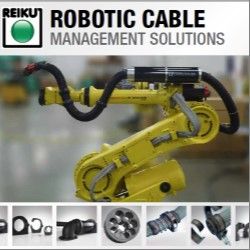Automated assembly lines from KUKA Systems outfit Canadas largest solar panel plant
Harnessing the Sun's Power
Contributed by | Kuka Systems
_PHOTO.jpg)
![]() KUKA Systems Corp North America, a Michigan-based company, is part of the KUKA Systems Group of Augsburg, Germany, a leading global supplier of flexible automation systems for the Automotive, Aerospace, Energy and Industrial Solutions sectors. Some 3,500 employees worldwide work on ideas, concepts and solutions for automated production and the provision of products and services for virtually all tasks in the industrial processing of metallic and non-metallic materials. The Energy Division offers engineering services, automated production modules and complete turnkey production lines for the photovoltaic, solar thermal and wind energy sectors.
KUKA Systems Corp North America, a Michigan-based company, is part of the KUKA Systems Group of Augsburg, Germany, a leading global supplier of flexible automation systems for the Automotive, Aerospace, Energy and Industrial Solutions sectors. Some 3,500 employees worldwide work on ideas, concepts and solutions for automated production and the provision of products and services for virtually all tasks in the industrial processing of metallic and non-metallic materials. The Energy Division offers engineering services, automated production modules and complete turnkey production lines for the photovoltaic, solar thermal and wind energy sectors.
The content & opinions in this article are the author’s and do not necessarily represent the views of RoboticsTomorrow
Comments (0)
This post does not have any comments. Be the first to leave a comment below.
Featured Product

